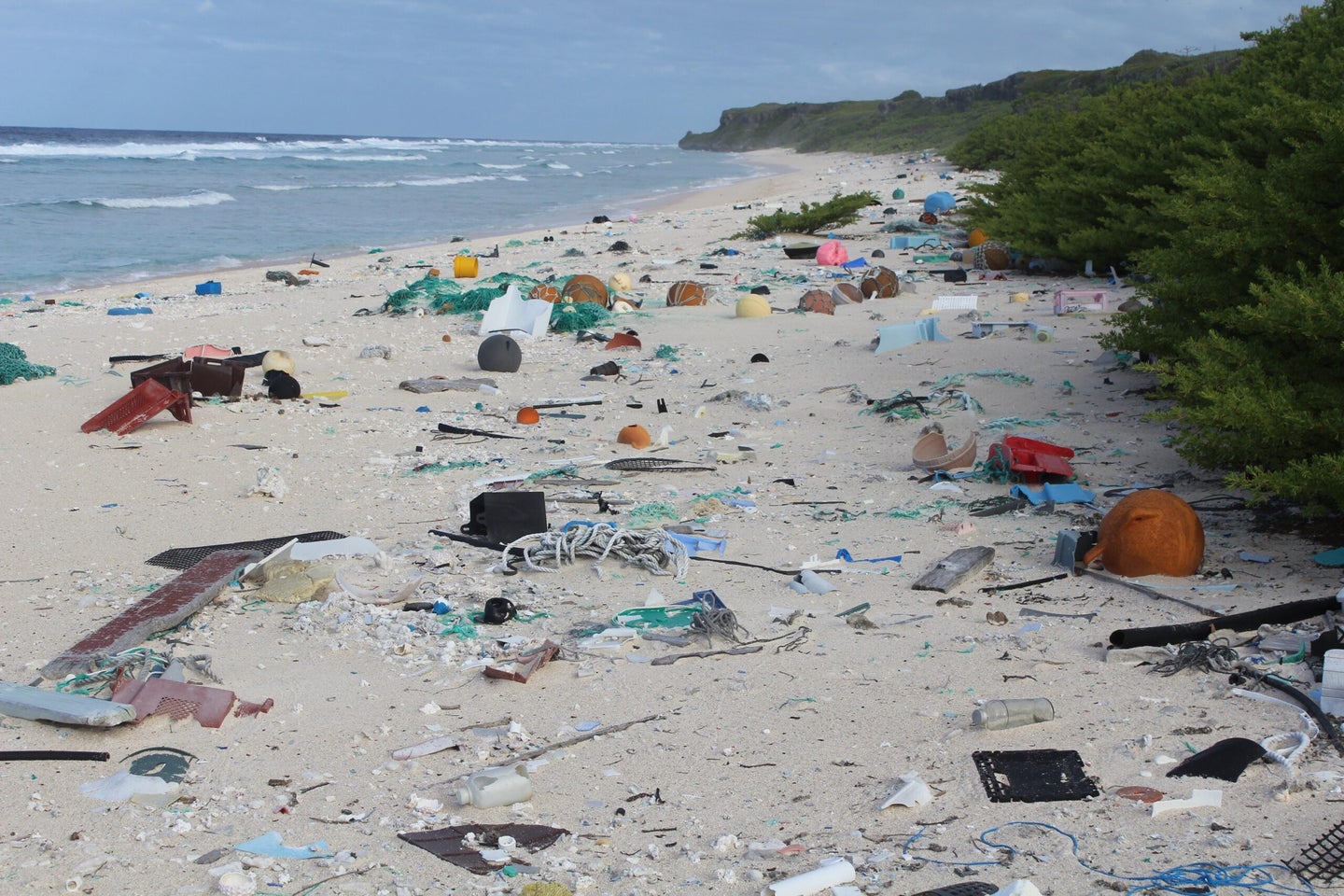This remote island in the South Pacific is covered in 18 tons of our trash
Paradise lost

Traveling by ship, it takes about 13 days to reach Henderson Island from New Zealand. Hidden in the South Pacific, 3000 miles from anywhere, this UNESCO World Heritage Site in the Pitcairns is “one of the most pristine islands left in the world, never inhabited by humans, rarely visited even for research purposes,” says Jennifer Lavers.
After she and her colleagues disembarked on Henderson Island in May 2015 to do some ecology research, they didn’t see another ship until they got picked up at the end of August. But even though humans rarely touch the island, our fingerprints are all over it: during their stay, Lavers and her fellow researchers found that this remote island is home not only to endangered petrels and nesting sea turtles, but approximately 37,661,395 pieces of manmade trash.
Their findings are published today in the Proceedings of the National Academy of Science. After digging up a startling amount of garbage during their beach survey, Lavers (a marine ecotoxicologist from the University of Tasmania) and Alexander Bond (a conservation scientist from the Royal Society for the Protection of Birds) concluded that this remote island has the highest density of trash ever reported in nature.
By their calculations, Henderson is littered with at least 17.6 tons of (mostly plastic) trash—and every square meter of the beach gets around 27 new pieces of junk added to its collection every day.
David Barnes, a marine ecologist who studies plastic pollution at the British Antarctic Survey, calls this number ‘pretty scary.’ “In less than a century, plastic has made a world of difference in so many ways. We may spend centuries undoing some of the very serious problems, even if we start now,” he says. “Unfortunately the most remote wilderness spots are becoming testament to the scale of the problem, not just for biodiversity but for us.”
What’s scarier is that Henderson Island’s 17.6 tons is nothing compared to the the total weight of garbage on the planet. In fact, we create exactly that much plastic every two seconds. (Here’s a list of a few ways you can cut down on the amount the trash you generate, just in case you’re now panicking like I am.) Five trillion bits of plastic are estimated to be swilling around our oceans, but we don’t know where most of it ends up once it gets there. Today’s study indicates that remote islands like Henderson may be holding onto some of those “lost” plastics, becoming our unintentional landfills.

“Remote studies like this help us to understand rates of accumulation, composition, and fate of plastic pollution,” says Barnes, who was not involved in the study. Although the amount of trash that gets deposited varies from coastline to coastline, Lavers and Bond hope that doing more beach surveys will help to plug in some of the missing pieces of the plastics puzzle. Plus, these studies are cheaper than trawling through the garbage patches in the ocean.
“The human footprint is everywhere,” says Lavers, “and it runs deeper than most of us imagine.”